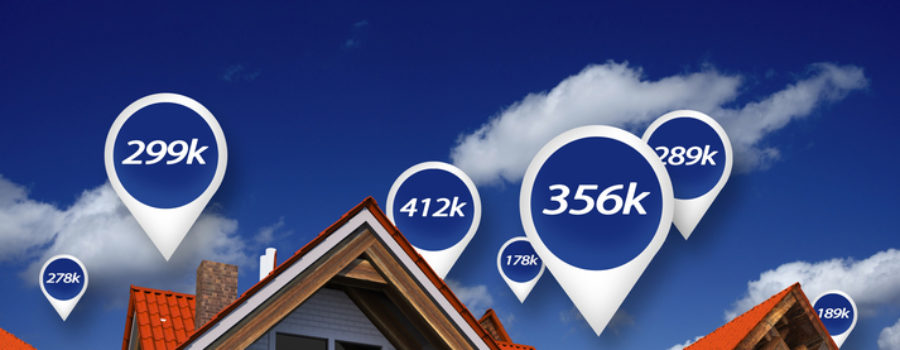Article courtesy of the National Association of REALTORS®
WASHINGTON (August 16, 2017) — The headstrong supply and demand imbalances in much of the country slightly tempered the pace of sales and caused home prices to maintain their robust growth in the second quarter, according to the latest quarterly report by the National Association of Realtors®.
The national median existing single-family home price in the second quarter was $255,600, which is up 6.2 percent from the second quarter of 2016 ($240,700) and surpasses the third quarter of last year ($241,300) as the new peak quarterly median sales price. The median price during the first quarter increased 6.9 percent from the first quarter of 2016.
Single-family home prices last quarter increased in 87 percent of measured markets, with 154 out of 178 metropolitan statistical areas1 (MSAs) showing sales price gains in the second quarter compared with the second quarter of 2016. Twenty-three areas (13 percent) recorded lower median prices from a year earlier.
Lawrence Yun, NAR chief economist, says home prices in most metro areas continued their fast ascent in the second quarter because supply remained at pitiful levels. “The 2.2 million net new jobs created over the past year generated significant interest in purchasing a home in what was an extremely competitive spring buying season,” he said. “Listings typically flew off the market in under a month2 — and even quicker in the affordable price range — in several parts of the country. With new supply not even coming close to keeping pace, price appreciation remained swift in most markets.”
Added Yun, “The glaring need for more new home construction is creating an affordability crisis that needs to be addressed by policy officials and local governments. An increasing share of would-be buyers are being priced out of the market and are unable to experience the wealth building benefits of homeownership.”
Twenty-three metro areas in the second quarter (13 percent) experienced double-digit increases, down from 30 areas in the first quarter (17 percent). Overall, there were slightly more rising markets in the second quarter compared to the first quarter, when price gains were recorded in 85 percent of metro areas.
Total existing-home sales3, including single family and condos, slipped 0.9 percent to a seasonally adjusted annual rate of 5.57 million in the second quarter from 5.62 million in the first quarter, but are still 1.6 percent higher than the 5.48 million pace during the second quarter of 2016.
At the end of the second quarter, there were 1.96 million existing homes available for sale4, which was 7.1 percent below the 2.11 million homes for sale at the end of the second quarter in 2016. The average supply during the second quarter was 4.2 months — down from 4.6 months in the second quarter of last year.
Last quarter, a rise in the national family median income ($71,529)5 was not enough to offset weaker affordability from the combination of higher mortgage rates compared to a year ago and rising home prices. To purchase a single-family home at the national median price, a buyer making a 5 percent down payment would need an income of $56,169, a 10 percent down payment would require an income of $53,213, and $47,300 would be needed for a 20 percent down payment.
“Mortgage rates have subsided in recent months, which has only somewhat helped take away some of the sting prospective buyers are experiencing with the deteriorating affordability conditions in many areas,” added Yun. “Household incomes may be rising and giving consumers assurance that now is a good time to buy, but these severe inventory shortages will likely continue to be a drag on sales potential the second half of the year.”
The five most expensive housing markets in the second quarter were the San Jose, California, metro area, where the median existing single-family price was $1,183,400; San Francisco, $950,000; Anaheim-Santa Ana, California, $788,000; urban Honolulu, $760,600; and San Diego, $605,000.
The five lowest-cost metro areas in the second quarter were Youngstown-Warren-Boardman, Ohio, $87,000; Cumberland, Maryland, $98,200; Decatur, Illinois, $107,400; Binghamton, New York, $109,000; and Elmira, New York, $111,600.
Metro area condominium and cooperative prices — covering changes in 61 metro areas — showed the national median existing-condo price was $239,500 in the second quarter, up 5.4 percent from the second quarter of 2016 ($227,200). Eighty-seven percent of metro areas showed gains in their median condo price from a year ago.
Regional Breakdown
Total existing-home sales in the Northeast rose 1.3 percent in the second quarter and are 0.4 percent above the second quarter of 2016. The median existing single-family home price in the Northeast was $282,300 in the second quarter, up 3.2 percent from a year ago.
In the Midwest, existing-home sales increased 4.2 percent in the second quarter but are 0.5 percent below a year ago. The median existing single-family home price in the Midwest increased 6.6 percent to $204,000 in the second quarter from the same quarter a year ago.
Existing-home sales in the South dipped 3.0 percent in the second quarter but are 2.5 percent higher than the second quarter of 2016. The median existing single-family home price in the South was $229,400 in the second quarter, 6.7 percent above a year earlier.
In the West, existing-home sales decreased 3.7 percent in the second quarter but are 3.1 percent above a year ago. The median existing single-family home price in the West increased 7.5 percent to $372,400 in the second quarter from the second quarter of 2016.
The National Association of Realtors®, “The Voice for Real Estate,” is America’s largest trade association, representing over 1.2 million members involved in all aspects of the residential and commercial real estate industries.
# # #
NOTE: NAR releases quarterly median single-family price data for approximately 175 Metropolitan Statistical Areas (MSAs). In some cases the MSA prices may not coincide with data released by state and local Realtor® associations. Any discrepancy may be due to differences in geographic coverage, product mix, and timing. In the event of discrepancies, Realtors® are advised that for business purposes, local data from their association may be more relevant.
Data tables for MSA home prices (single family and condo) are posted at http://www.realtor.org/topics/metropolitan-median-area-prices-and-affordability/data. If insufficient data is reported for a MSA in particular quarter, it is listed as N/A. For areas not covered in the tables, please contact the local association of Realtors®.
1Areas are generally metropolitan statistical areas as defined by the U.S. Office of Management and Budget. NAR adheres to the OMB definitions, although in some areas an exact match is not possible from the available data. A list of counties included in MSA definitions is available at: http://www.census.gov/population/estimates/metro-city/List4.txt(link is external).
Regional median home prices are from a separate sampling that includes rural areas and portions of some smaller metros that are not included in this report; the regional percentage changes do not necessarily parallel changes in the larger metro areas. The only valid comparisons for median prices are with the same period a year earlier due to seasonality in buying patterns. Quarter-to-quarter comparisons do not compensate for seasonal changes, especially for the timing of family buying patterns.
Median price measurement reflects the types of homes that are selling during the quarter and can be skewed at times by changes in the sales mix. For example, changes in the level of distressed sales, which are heavily discounted, can vary notably in given markets and may affect percentage comparisons. Annual price measures generally smooth out any quarterly swings.
NAR began tracking of metropolitan area median single-family home prices in 1979; the metro area condo price series dates back to 1989.
Because there is a concentration of condos in high-cost metro areas, the national median condo price often is higher than the median single-family price. In a given market area, condos typically cost less than single-family homes. As the reporting sample expands in the future, additional areas will be included in the condo price report.
2According to NAR’s Realtors® Confidence Index, homes typically went under contract in 28 days during the second quarter.
3The seasonally adjusted annual rate for a particular quarter represents what the total number of actual sales for a year would be if the relative sales pace for that quarter was maintained for four consecutive quarters. Total home sales include single family, townhomes, condominiums and co-operative housing.
4Total inventory and month’s supply data are available back through 1999, while single-family inventory and month’s supply are available back to 1982 (prior to 1999, single-family sales accounted for more than 90 percent of transactions and condos were measured only on a quarterly basis).
Seasonally adjusted rates are used in reporting quarterly data to factor out seasonal variations in resale activity. For example, sales volume normally is higher in the summer and relatively light in winter, primarily because of differences in the weather and household buying patterns.
5Income figures are rounded to the nearest hundred, based on NAR modeling of Census data. Qualifying income requirements are determined using several scenarios on downpayment percentages and assume 25 percent of gross income devoted to mortgage principal and interest at a mortgage interest rate of 4.0%.
NOTE: Existing-Home Sales for July will be released August 24, and the Pending Home Sales Index for July will be released August 31; release times are 10:00 a.m. ET.





